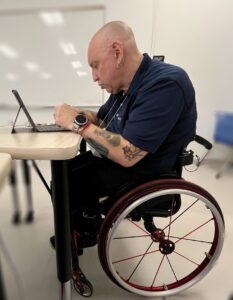For most of us, work is based around an office. Our team gathers in a particular workplace following a set schedule. The pandemic changed all that. Employers adjusted their operations, adopting remote work, virtual meetings, and electronic document sharing as the new standard for productivity.
This shift created new opportunities for disabled employees. They could now work from the comfort of their homes, free from the constraints of commuting and rigid schedules. Simultaneously, organizations realized that valuable resources existed outside of traditional office spaces. Teams could seamlessly collaborate from diverse locations, harnessing a broad spectrum of skills and expertise, ultimately fostering a more far-reaching community.
While the pandemic persists, and individuals with disabilities continue to exist (!), there’s a growing momentum to return to the office. The challenge now is to find the right balance, accommodating the needs of all employees.
I’m eager to learn about your workplace’s current stance on hybrid and virtual work opportunities. What practices are working effectively, and where could improvements be made to ensure individuals with disabilities have equal opportunities to contribute and engage fully with their teams?
Access is for everyone!




